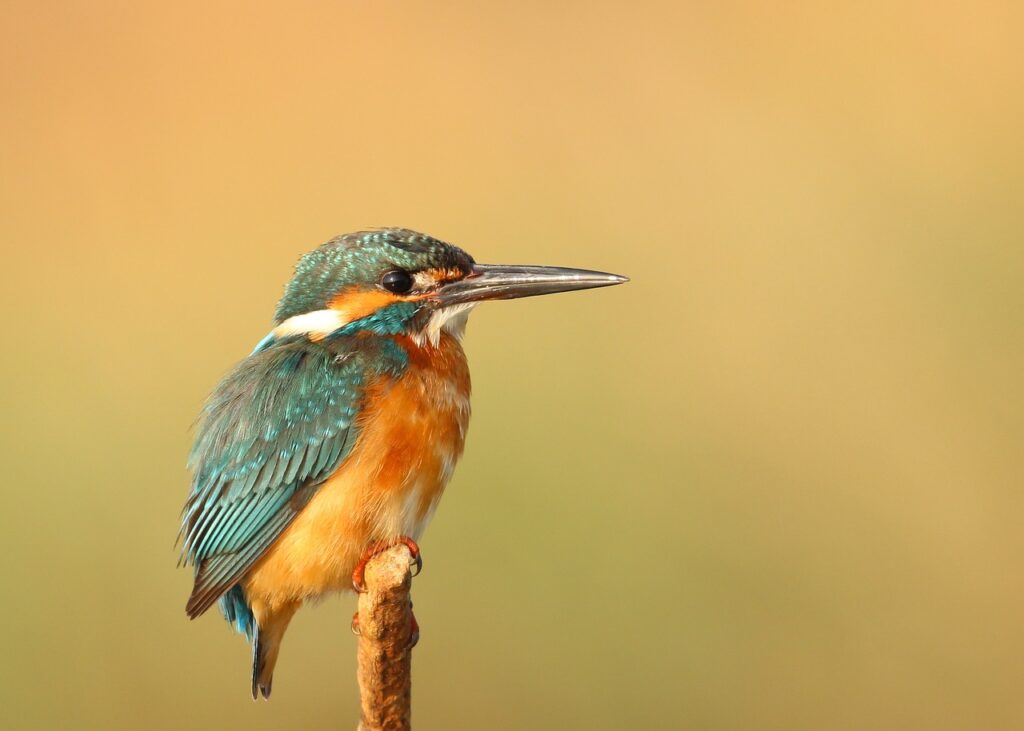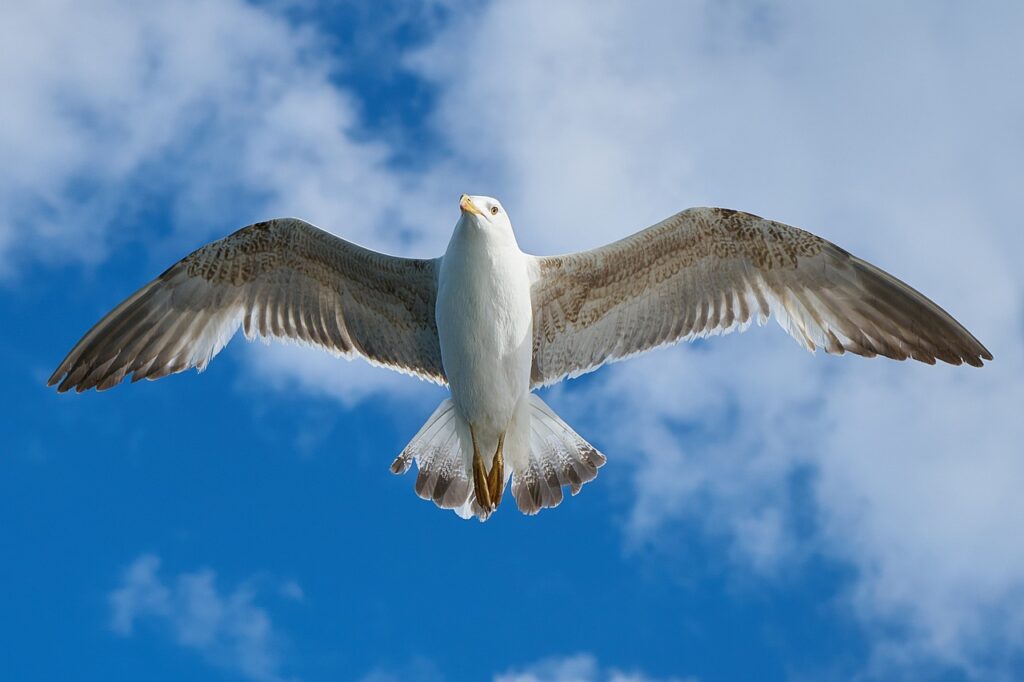Adverts
Birdwatching, an activity that attracts millions of enthusiasts around the world, has been a passion that spans centuries. From naturalists of the past, armed with binoculars and field guides, to modern observers, the quest to identify and understand birds has always been an intriguing and rewarding challenge.
In this scenario, the bird identification app emerges as a particularly notable technological advancement, revolutionizing the way we interact with and identify these fascinating creatures.
Adverts
Application for identifying birds
This article explores the impact and innovations brought by the bird identification app, highlighting how this technological tool can expand and enrich our experiences with the natural world. The bird identification application, combining the latest technology in image and sound recognition with vast ornithological databases, is not just a tool to help enthusiasts identify unknown species; it also represents a bridge between nature and technology, promoting education, research and environmental conservation.
By democratizing bird knowledge and making observation more accessible and informative, the bird identification app is opening new avenues for public participation in citizen science and species conservation. This article dives into the features, impacts, and potential of the bird identification app, illuminating how it is shaping the future of birdwatching and environmental engagement.
Adverts

Brief History of Birdwatching
The practice of birdwatching, often seen as a peaceful and contemplative hobby, has a rich and multifaceted history that is intertwined with the development of science and appreciation of nature. Since ancient times, birds have been objects of fascination for humans, appearing in mythologies, art and literature around the world. However, it was during the 18th century, with the flowering of the Enlightenment and the resulting push for the classification and study of nature, that birdwatching began to take a more systematic form.
The advent of detailed field guides in the 19th century, such as the pioneering works of John James Audubon in the United States, marked a significant turning point, making bird knowledge accessible to a wider audience. These guides were true works of art, combining scientific precision with detailed illustrations, and helped to foster a growing interest in birds not only as subjects of scientific study but also as symbols of beauty and freedom in nature.
In the 20th century, birdwatching evolved from an elitist pastime to a popular activity. The invention of more affordable and effective binoculars allowed people from diverse social backgrounds to engage in the activity, and clubs birdwatching options began to emerge in various parts of the world. At the same time, growing environmental awareness has highlighted the importance of birds as indicators of ecological health, leading to greater emphasis on their conservation.
Today, birdwatching is a global activity that not only provides pleasure and relaxation, but also plays a crucial role in citizen science, contributing to important studies on migration, behavior and environmental impacts on bird populations. This scenario set the stage for the introduction of bird identification apps, a modern tool that has transformed the way birders of all levels interact with this ancient practice.
Technology in Biology and Observation
Advancing technology has been a key element in progress in biology and conservation, profoundly influencing the way we study and protect bird species. This technological evolution ranges from the first innovations in optics and field equipment to modern data analysis and artificial intelligence techniques.
Innovations in Optics and Field Equipment
At the beginning of the 20th century, the invention and improvement of binoculars and telescopes provided a major boost to bird watching. These devices allowed a clearer and more detailed view of birds, even from a distance, which was essential for behavioral studies and species identification. Furthermore, the development of sound recording equipment has made it possible to collect birds' songs and calls, a crucial aspect for identifying and studying the species' communication behavior.
Advances in Data Collection and Analysis Methods
With the advent of computing and the internet, a new era for data collection and analysis in biology and conservation has emerged. Specialized software has enabled the storage, processing and analysis of large volumes of data on bird species, including their locations, migrations and behavioral patterns. The ability to share and access this data globally has facilitated unprecedented collaborations between scientists and birders around the world.
Integration of Digital Technology and Artificial Intelligence
The 21st century has seen the incorporation of artificial intelligence and machine learning into bird observation and study tools. These technologies have allowed the development of bird identification applications capable of recognizing species from photos or sound recordings, using advanced algorithms to compare entries with large databases. This innovation not only significantly improved the accuracy of bird identification, but also made the activity more accessible to a wider audience, including enthusiasts without formal training in ornithology.
Technological developments in bird biology and conservation have created a constantly evolving landscape, where increasingly sophisticated tools expand our understanding of birds and strengthen conservation efforts. This trajectory of innovation laid the foundation for the emergence of bird identification applications, which today represent a milestone at the intersection of technology, citizen science and environmental conservation.

Which bird identification app to choose? Check out the main ones
The bird identification application needs to be complete. Birdwatching is an activity that captivates people of all ages and abilities around the world. With the rise of mobile technology, several apps have been developed to assist with bird identification, making this hobby more accessible and informative. Below are some of the most popular and effective apps on the market:
- Merlin BirdID – Developed by the Cornell Lab of Ornithology, Merlin Bird ID is widely considered one of the best apps for bird identification. Using photos and simple questions, it helps you identify birds based on location data and observations. It is known for its user-friendly interface and extensive database, which includes thousands of species from around the world.
- eBird – Also created by Cornell Lab, eBird is more than an application for identifying birds; is a global tool for recording and sharing bird observations. Users can keep lists of their observations, participate in citizen science projects, and access data about birds around the world.
- Audubon Bird Guide – This bird identification app from the National Audubon Society offers a comprehensive guide to more than 800 species of North American birds. It features high-quality photos, recordings of bird calls and detailed information about each species, as well as an identification feature based on physical and behavioral characteristics.
- BirdsEye Bird Finding Guide – BirdsEye is a unique bird identification app that not only helps in bird identification but also provides information about places where birds can be observed. It's a valuable tool for planning birdwatching excursions, offering tips on the best viewing spots and the species that can be found in different regions.
- RSPB Bird Identifier – Especially useful for birdwatchers in the UK, this bird identification app from the Royal Society for the Protection of Birds (RSPB) offers a simple way to identify British birds. With information about habitats, features and sounds, it's an excellent tool for beginners and experts alike.
These bird identification apps have been instrumental in connecting people with nature, educating them about local and global biodiversity, and encouraging conservation. Each offers a unique set of features and specializations, making birdwatching a more enriching and accessible experience for everyone.
The vast majority of applications cover a large number of birds, being able to identify the most diverse birds.
Challenges and Limitations
Despite their undeniable popularity and usefulness, bird identification apps face several challenges and limitations. These aspects are crucial to understanding the current dynamics of birdwatching and anticipating the future development of these tools.
Accuracy in Identification
One of the main challenges is accuracy in identifying species, especially in cases of rare birds or those with similar characteristics. Identification errors may occur due to limitations in the quality of images or recordings, regional variations within the same species, or simply due to the limitations of artificial intelligence algorithms. These errors can lead to confusion among users and, in more serious cases, to incorrect data in conservation research.
Privacy and Data Security Issues
Collecting and storing large volumes of user data raises significant privacy and security concerns. User location data, for example, if not managed correctly, can expose sensitive information or lead to negative impacts on bird habitats, especially in areas that require protection from human disturbance.
Technological Dependence and Loss of Traditional Skills
Increasing reliance on identification apps may lead to the gradual loss of traditional birdwatching skills such as visual and auditory identification without technological assistance. This dependence can also affect the way birdwatchers experience and connect with nature, potentially reducing the practice to a more superficial, screen-mediated interaction.
Environmental and Ethical Impact
There is also a discussion around the environmental and ethical impact of using identification applications. Issues such as unintentional disturbance of birds and habitats while searching for sightings to use the app, and irresponsible or unethical use of information obtained, are growing concerns in the birding community.
Challenges in Inclusion and Accessibility
Finally, although bird identification apps have democratized birdwatching, there are still inclusion and accessibility challenges. This includes the availability of the app to identify birds in different languages, accessibility for people with disabilities and availability in regions with less internet connectivity.
These challenges and limitations are fundamental to understanding areas that require improvements and future developments in bird identification applications. Recognizing these issues is an essential step to ensuring that these tools are used responsibly and effectively, both for the satisfaction of users and for the benefit of bird research and conservation.
Conclusion
This article explored the fascinating world of bird identification apps, a technological innovation that has transformed the practice of birdwatching and has had a significant impact on bird research and conservation. Throughout the sections, we discuss the historical evolution of birdwatching and the technological advances that have made bird identification apps possible, as well as the many ways in which they benefit both amateurs and professionals in the field of ornithology.
Bird identification apps have democratized ornithological knowledge, making bird identification more accessible and informative to a wider audience. They have also emerged as important tools in citizen science, allowing observers around the world to contribute valuable data to scientific research and conservation efforts through bird identification applications. Additionally, we examine the challenges and limitations these apps face, including issues of accuracy, data privacy, and ethics in birding through bird identification apps.
Looking to the future, bird identification apps are poised to evolve even further. We anticipate improvements in the accuracy and functionality of bird identification apps, integration with technologies such as augmented reality, and an increasing focus on sustainability and environmental awareness. However, it is essential that we continue to address challenges related to the inclusivity, accessibility, and ethical responsibility of bird identification apps.
In conclusion, bird identification apps are not just a remarkable achievement of modern technology; they represent a valuable bridge between humans and nature, encouraging a greater appreciation and understanding of birds through apps. At the same time, they remind us of our collective responsibility to protect and conserve the natural world, for the benefit of birds and future generations of birdwatchers and nature lovers, through the responsible use of bird identification apps.
